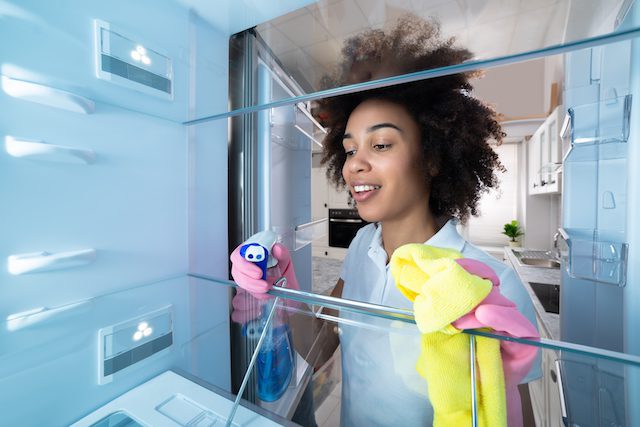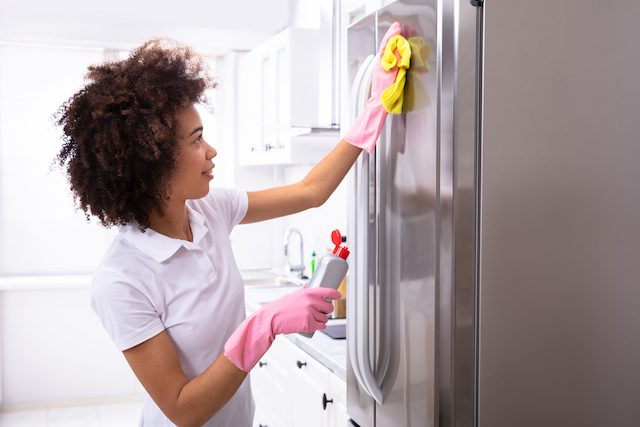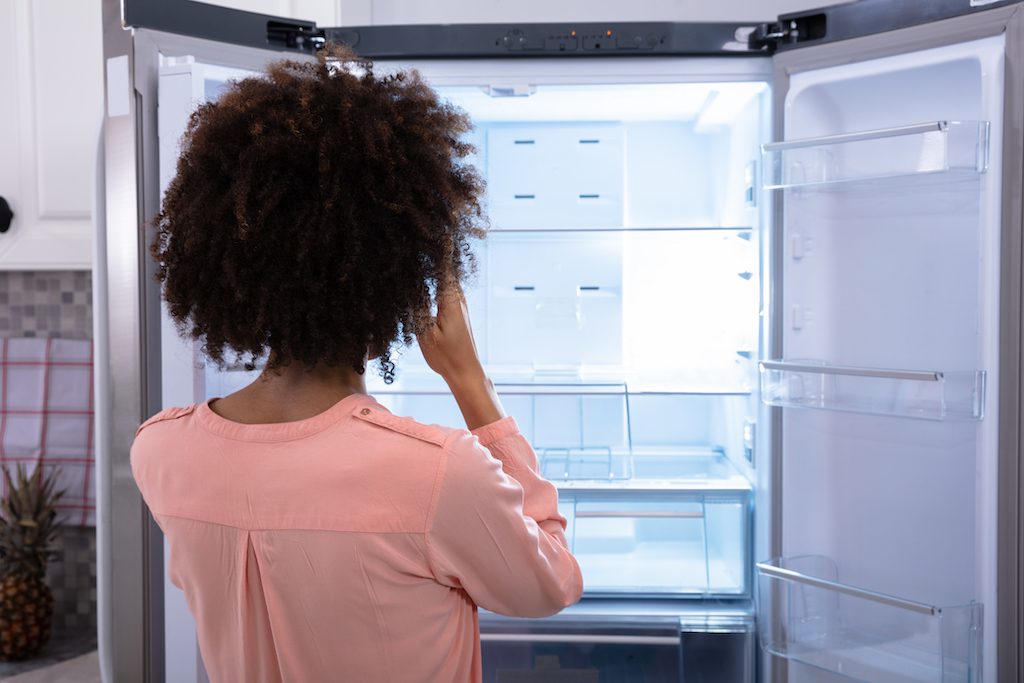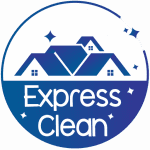The Easiest Way To Clean Your Refrigerator: Step-by-Step Guide
Keeping your refrigerator clean isn’t just about aesthetics—it’s critical for food safety, HVAC system efficiency, and health compliance, especially for facility managers and Chicago-area homeowners. In this comprehensive guide, Express Clean shares science-backed methods, chemical safety tips, and a straightforward cleaning schedule to help you maintain a spotless fridge year-round.
Why Regular Refrigerator Cleaning Matters
Whether you manage a commercial space, oversee facility operations, or keep your household running smoothly, refrigerator maintenance is essential. Proper cleaning prevents mold, odors, cross-contamination, and foodborne illness. According to CDC guidance on cleaning and disinfection, high-touch surfaces—including appliance handles and shelves—should be sanitized frequently to reduce risk.
Essential Supplies for Safe and Effective Cleaning
| Material | Purpose | Compatibility |
|---|---|---|
| PPE (Gloves, Eyewear) | Protect from irritants & biohazards | Required for all |
| Mild Dish Soap (pH 6-8) | Degreasing & dirt removal | Most surfaces |
| Baking Soda Solution | Odor neutralizing, gentle abrasive | Interior & gaskets |
| Microfiber Cloths | Lint-free, reduces scratch risk | Stainless steel & glass |
| EPA-registered Disinfectant | Sanitizing high-touch areas | Handles, shelves, drawers |
| Bucket & Soft Sponge | Mixing & application | General use |
Scheduling: When and How Often to Clean
- Light Cleaning: Wipe spills weekly as part of routine janitorial rounds or household chores.
- Thorough Deep Clean: Full interior clean every three months, or monthly in high-traffic commercial or facility settings in Chicago and suburbs.
- Post-Incident: Immediately after spills of strong-smelling or allergenic foods to prevent cross-contamination.
Step-by-Step: Easiest Refrigerator Cleaning Method
- Preparation and Safety Compliance
Don PPE (gloves and safety glasses). Unplug the fridge and remove all food items. Store perishables in a cooler. - Remove Drawers & Shelves
Take out removable parts for separate cleaning. Let glass components reach room temperature before washing to avoid thermal shock. - Wash Interior Surfaces
Use a solution of mild dish soap and warm water (pH 6-8 for material compatibility). Scrub with a microfiber cloth, focusing on seams, gaskets, and shelf rims. - Treat Stubborn Odors & Residues
Apply a paste of baking soda and water to tricky spots. Let dwell for 10–15 minutes, then wipe clean. - Disinfect High-Touch Points
Spray EPA-approved disinfectant on door handles, shelf fronts, and the control panel—leave to air dry as per manufacturer-recommended dwell time (typically 5–10 minutes). - Clean Removable Parts
Wash shelves and bins with the soap solution. Rinse thoroughly, air dry, then reinstall. - Restock and Restart
After all surfaces are completely dry, return food according to safe storage practices. Plug the appliance back in.
Material Compatibility & Chemistry Tips
Refrigerator interiors are often plastic, glass, or stainless steel. Always use neutral pH cleaners to avoid corrosion or staining. Harsh or abrasive chemicals can damage gaskets and control panels. For advice on cleaning stainless steel appliances, see our guide on best ways to clean stainless steel.
Compliance, Safety & Waste Handling
- Dispose of expired or spoiled foods according to local regulations in Chicago and surrounding areas.
- Never mix cleaning chemicals; unsafe reactions can result.
- Store cleaning agents in labeled, sealed containers away from food prep zones.
- Ensure proper ventilation throughout the cleaning process.
Time-Saving Scheduling Strategies
Integrate refrigerator cleaning with other maintenance tasks such as decluttering. To maximize efficiency, delegate responsibility on a monthly checklist—use a calendar reminder for quarterly deep cleans. Analyze appliance use patterns in busy households or shared facilities to time cleaning during lowest-usage periods. For a master cleaning checklist, see the comprehensive home cleaning checklist.
Frequently Asked Questions
- Can I use commercial-grade disinfectants in my home fridge? Yes, but verify that the product is safe for food-contact surfaces and always rinse thoroughly after use.
- Is it safe to use vinegar on stainless steel parts? Avoid vinegar, as its low pH may corrode stainless steel components—stick to neutral cleaners instead.
- What if I see mold or strong odors? Increase frequency of cleaning. Use a baking soda solution and ensure surfaces are completely dry afterward.
Related Reading
- How to clean your microwave for better kitchen hygiene
- Practical baking soda cleaning tips
- Best ways to declutter your space when cleaning
Need professional help with larger cleaning projects? Book expert house cleaning in Chicago or schedule a move-out cleaning today.
About the Author
Reviewed by: Express Clean Team — With over 20 years of experience in both commercial and residential cleaning in Chicago, our team specializes in safe, effective, and compliant cleaning methods for all facility types.


health problems caused by germs., Same Day Cleaning Service in Chicago, Chicago Same Day Cleaning, Same Day Cleaning Chicago, Chicago Cleaning Contractors, Same Day Service Cleaning in Evanston IL, Same Day Cleaning Chicago, Same Day Service Clean in Skokie il, Same Day Cleaning Service in Highland Park Il, Cleaning Services Same Day in Wicker Park IL





